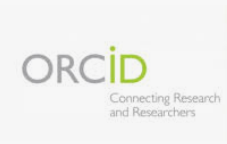Morphometric resource for the diagnosis of complex endometrial hyperplasia, and endometrial adenocarcinoma. Matanzas 2014-2015
Keywords:
morphometry, normal endometrium, complex endometrial hyperplasiaAbstract
Introduction: the endometrium is fundamental for the diagnosis of entities that are a health problem for female population. It is very important for the pathologist to find differences between the morphology of the endometrium of the endometrial hyperplasia and the endometrial adenocarcinoma allowing to perform the differential diagnosis between these two entities.
Objective: to determine the morphometric differences for the differential histopathological diagnosis between the complex endometrial hyperplasia, the endometrial adenocarcinoma and the normal proliferative endometrium.
Materials and methods: a cross-sectional, descriptive, observational study was applied and the morphometry was applied to a sample of 30 endometrial biopsies, with the objective of determining the morphometric differences for the histopathological differential diagnosis among complex endometrial hyperplasia, endometrial adenocarcinoma and normal proliferative endometrium. The morphometric system IMAGEN J 1.44p was used and the endometrial glands were studied and the height of their glandular epithelium was calculated.
Results: the minor, intermediate and higher height of the epithelium in the glands expressed tight differences among complex endometrial hyperplasia, endometrial adenocarcinoma and normal proliferative endometrium, and showed that there are differences between endometrial hyperplasia and endometrial adenocarcinoma when the studied variables take into account the glandular morphology.
Key words: morphometry, normal endometrium, complex endometrial hyperplasia.
Downloads
Published
How to Cite
Issue
Section
License
All content published in this journal is Open Access, distributed under the terms of the CC BY-NC 4.0 License.
It allows:
- Copy and redistribute published material in any medium or format.
- Adapt the content.
This will be done under the following terms:
- Attribute the authors' credits and indicate whether changes were made, in which case it must be in a reasonable way.
- Non-commercial use.
- Recognize the journal where it is published.
The copyrights of each article are maintained, without restrictions.





